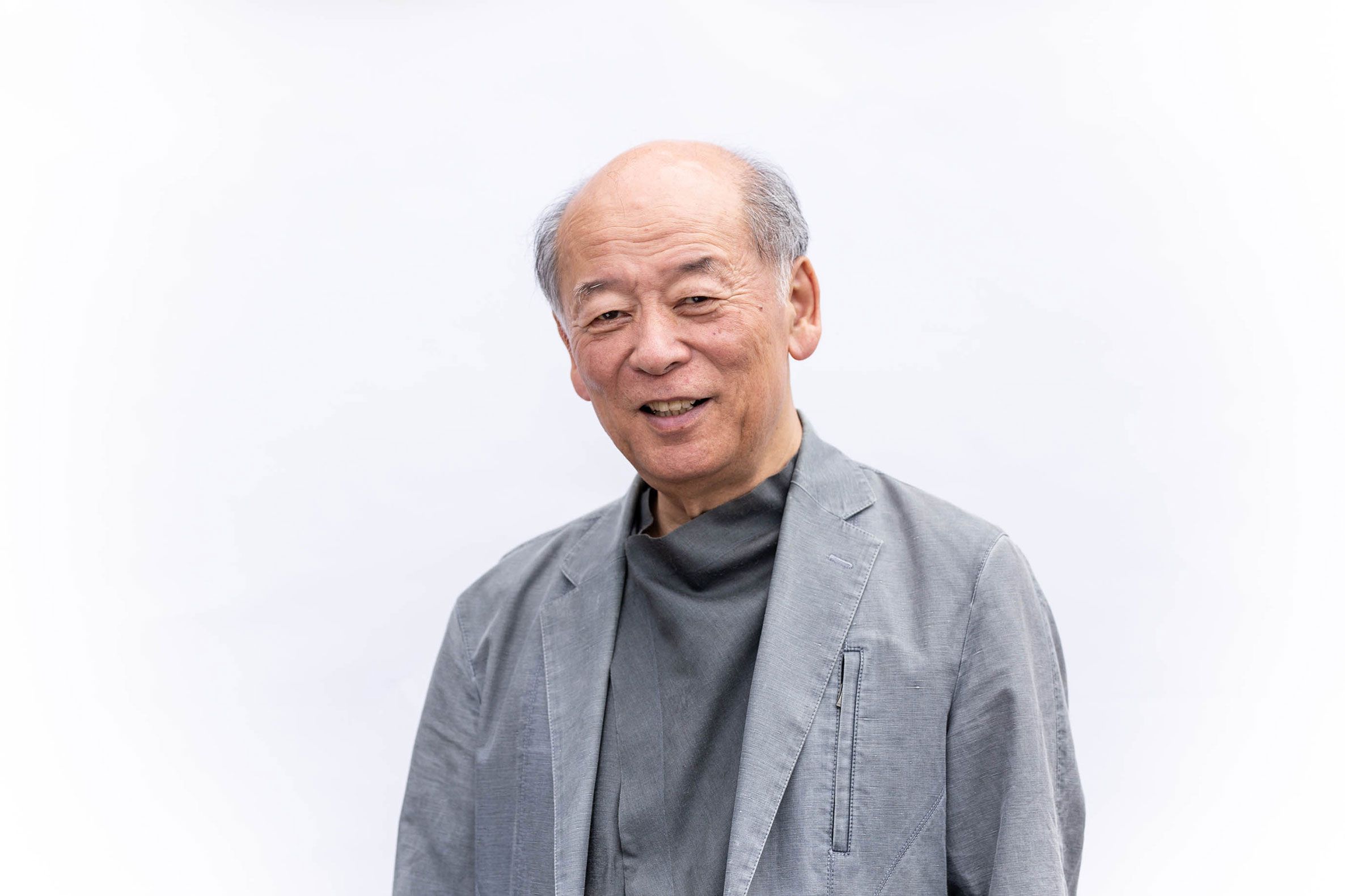When I took over the business, I made a decision to use only natural dyes.
When Yukio Yoshioka took over the family’s dyeing workshop, he was at the age of 42. Since then, the workshop has been dyeing solely with natural materials to revive the traditional Japanese colours. In 2016, England’s V&A Museum housed Somenotsukasa Yoshioka Dye Workshop’s “Japan’s Colour 70 Colours” to their permanent collection. Yoshioka worked as an editor before taking over his family business with a history dating back to the Edo Period (1603-1868).
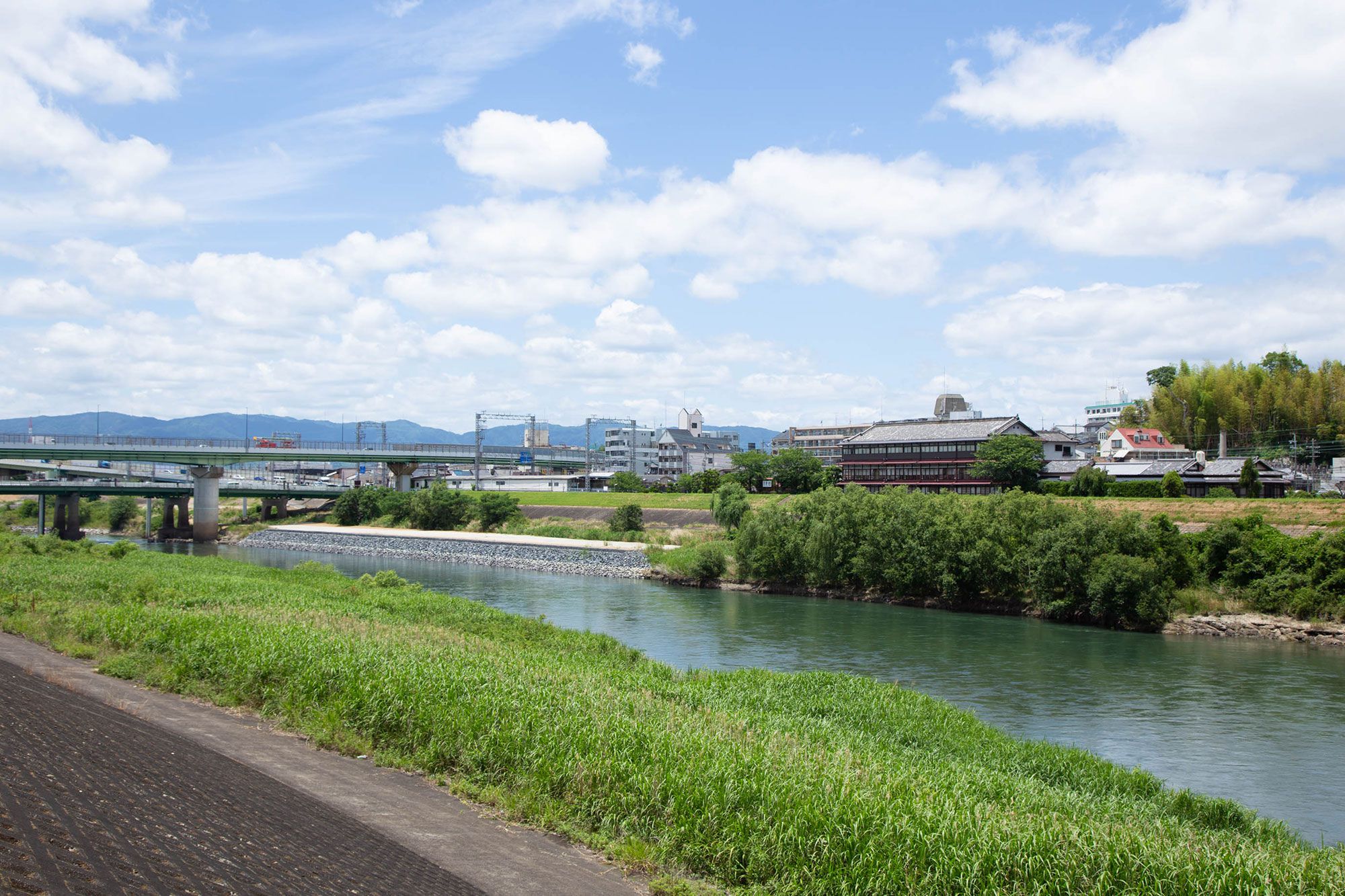

Somenotsukasa Yoshioka Dyeing Workshop is close to the Uji River.
“After graduating from university, I was working as an editor and kept a distance from my family business. I worked for an art publisher and my work was to visit museums. The study room in V&A Museum carried thousand of textiles which were stored into frames. I came to wonder why the older textiles tend to be more vivid compared to the later textiles. The reason was due to the appearance of synthetic dye after the industrial revolution in the 1800’s. I have been dyeing for the past 30 years and I believe that the most beautiful dye use plants”
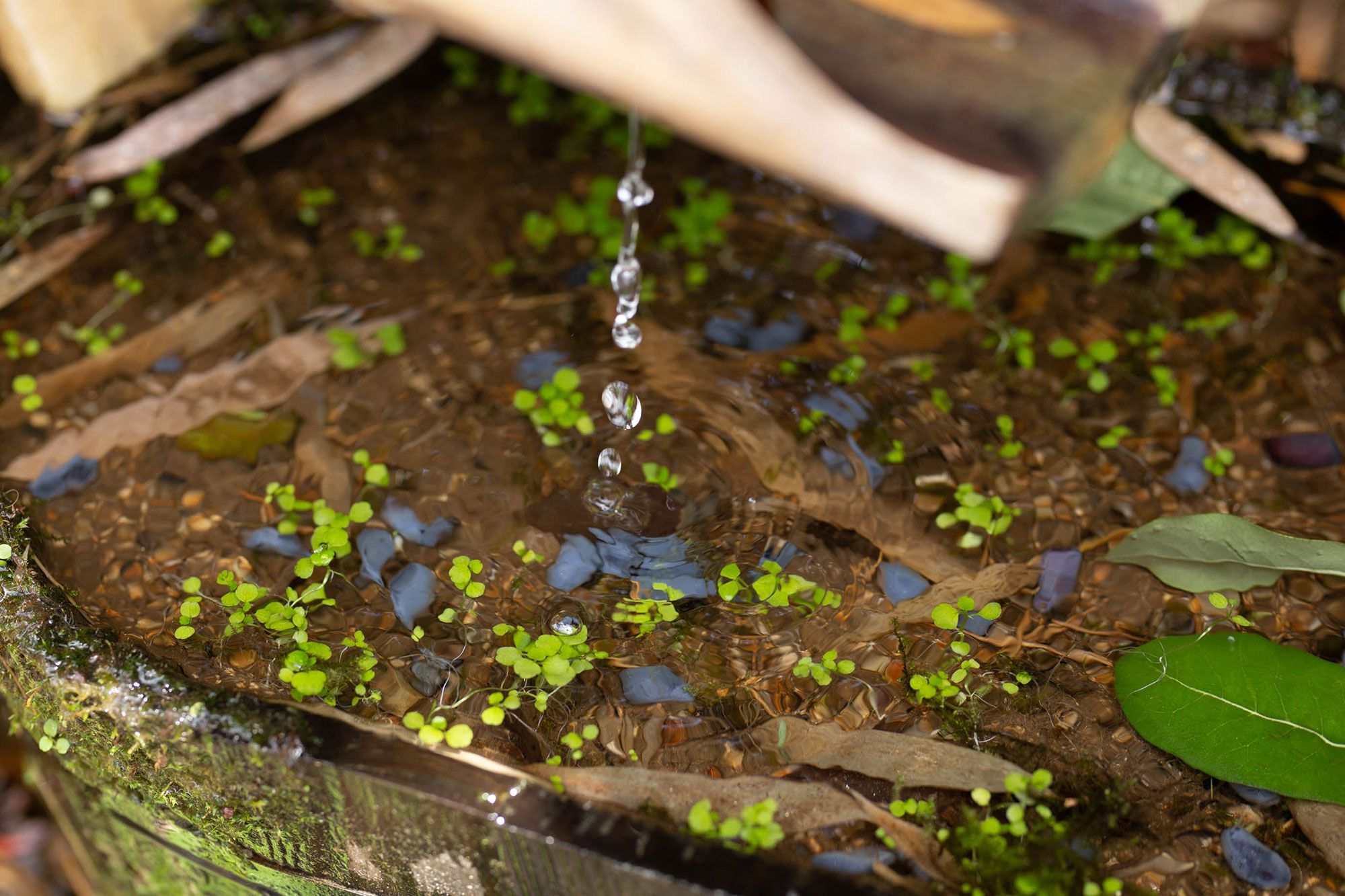

The workshop’s well water are used for dyeing. The water has extremely low content of iron which gives clarity to the colours.
The Japanese colours are vibrant.
They are not only the colour of Wabi-Sabi.
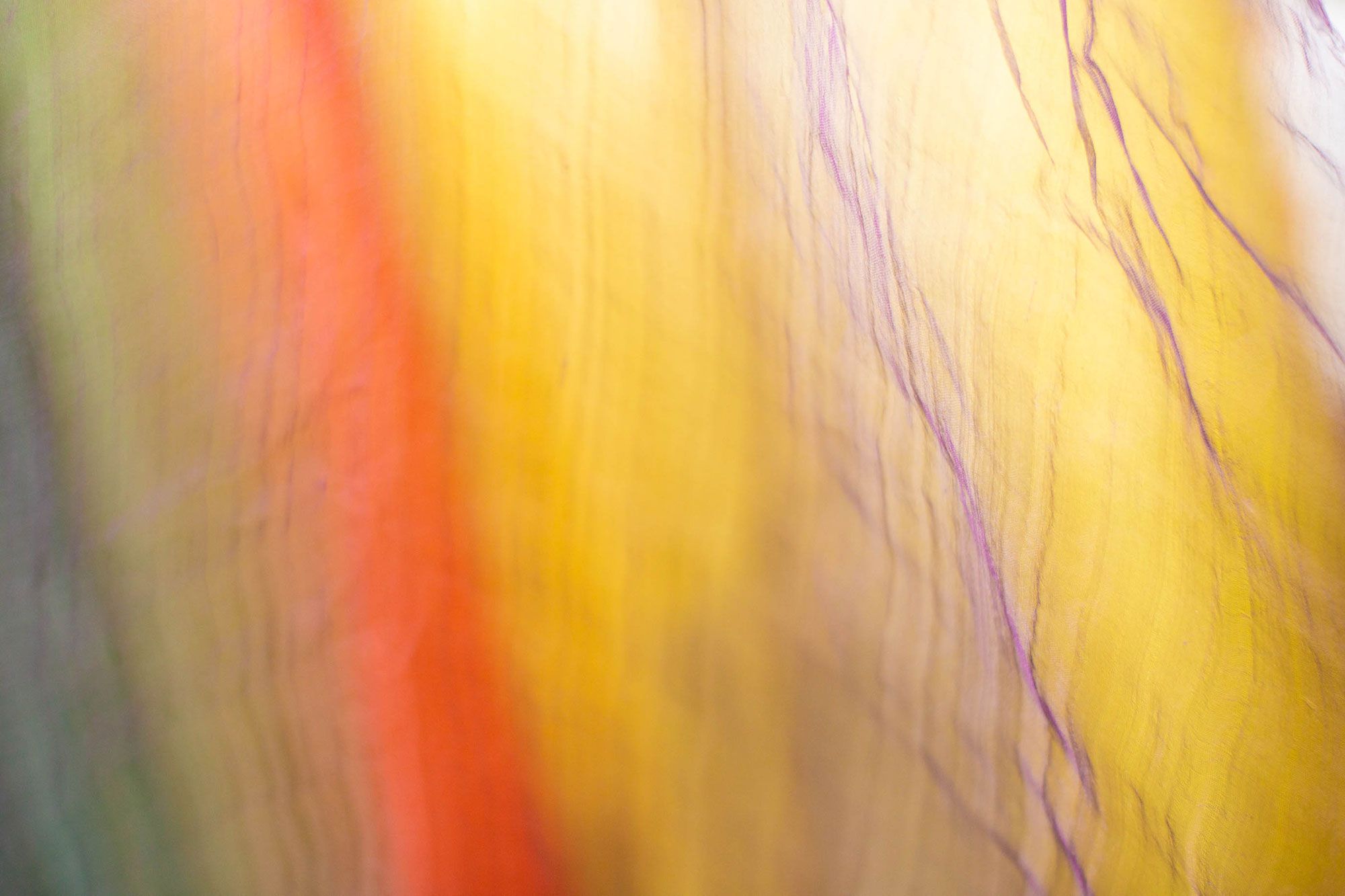

Stole by Somenotsukasa Yoshioka
Yoshioka’s workshop is located in Fushimi, Kyoto. The workshop is near to the Uji river and Fushimi sake district. “Our distinctiveness is the water. The water is drawn from below 100 meters. There are sake breweries such as Gekkeikan and Kizakura but our water is better.”, explains Yoshioka with a smile.
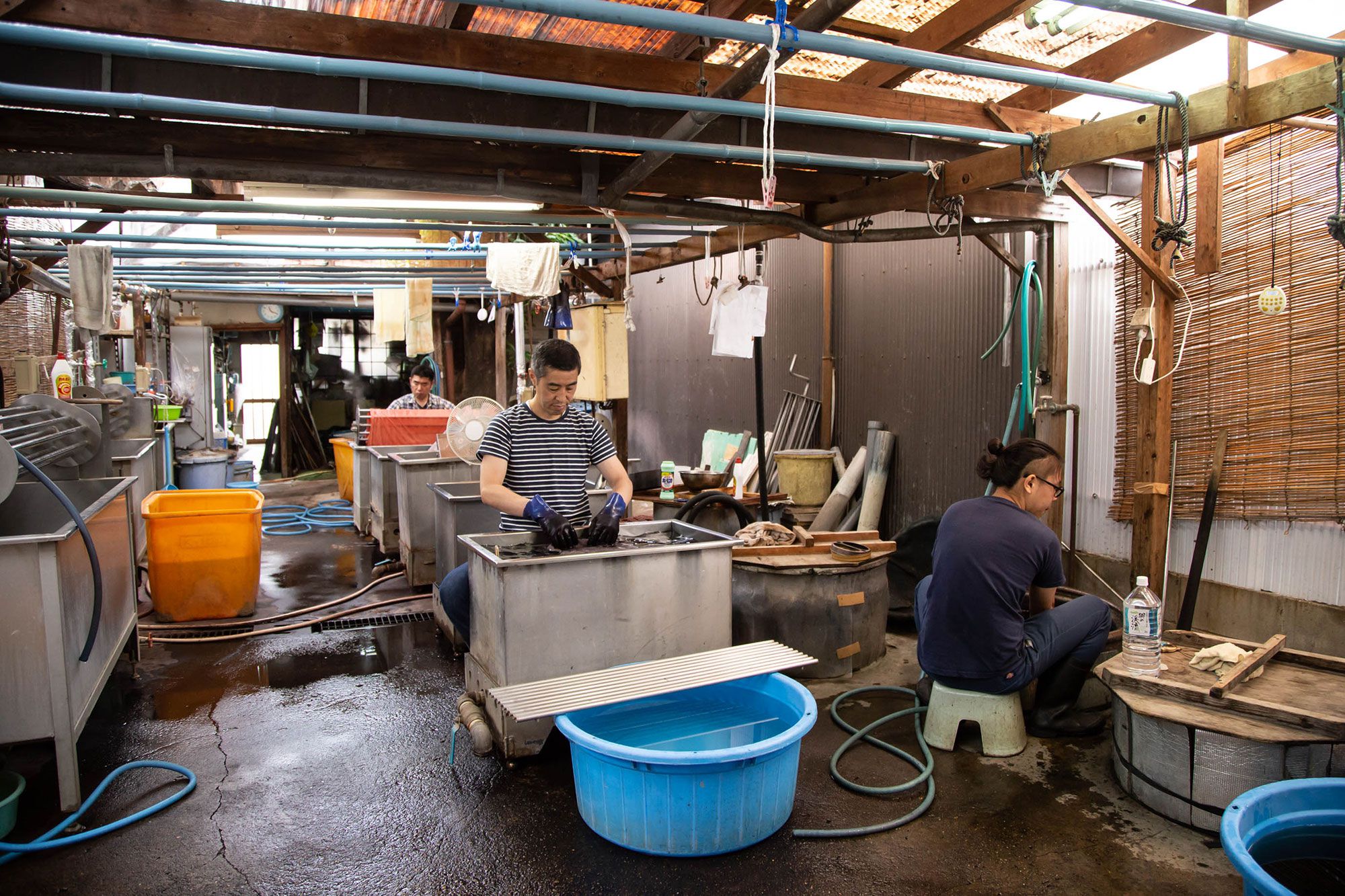

Inside of the workshop.
The well water which Yoshioka proudly showed us had clarity and vividness. “Since the Asuka Era (538-710), the colour of the garments became to be regarded important in Japan. In order to dye diverse colours, various natural ingredients were imported from abroad. There is a tree called Sohou (Sappanwood). By using the core of the tree, the textile can be dyed into red. Importing was the only solution to use this material since Sohou is a tropical plant. Japanese colour is not about using ingredients from only Japan. It is about the colour extracted by the Japanese.“
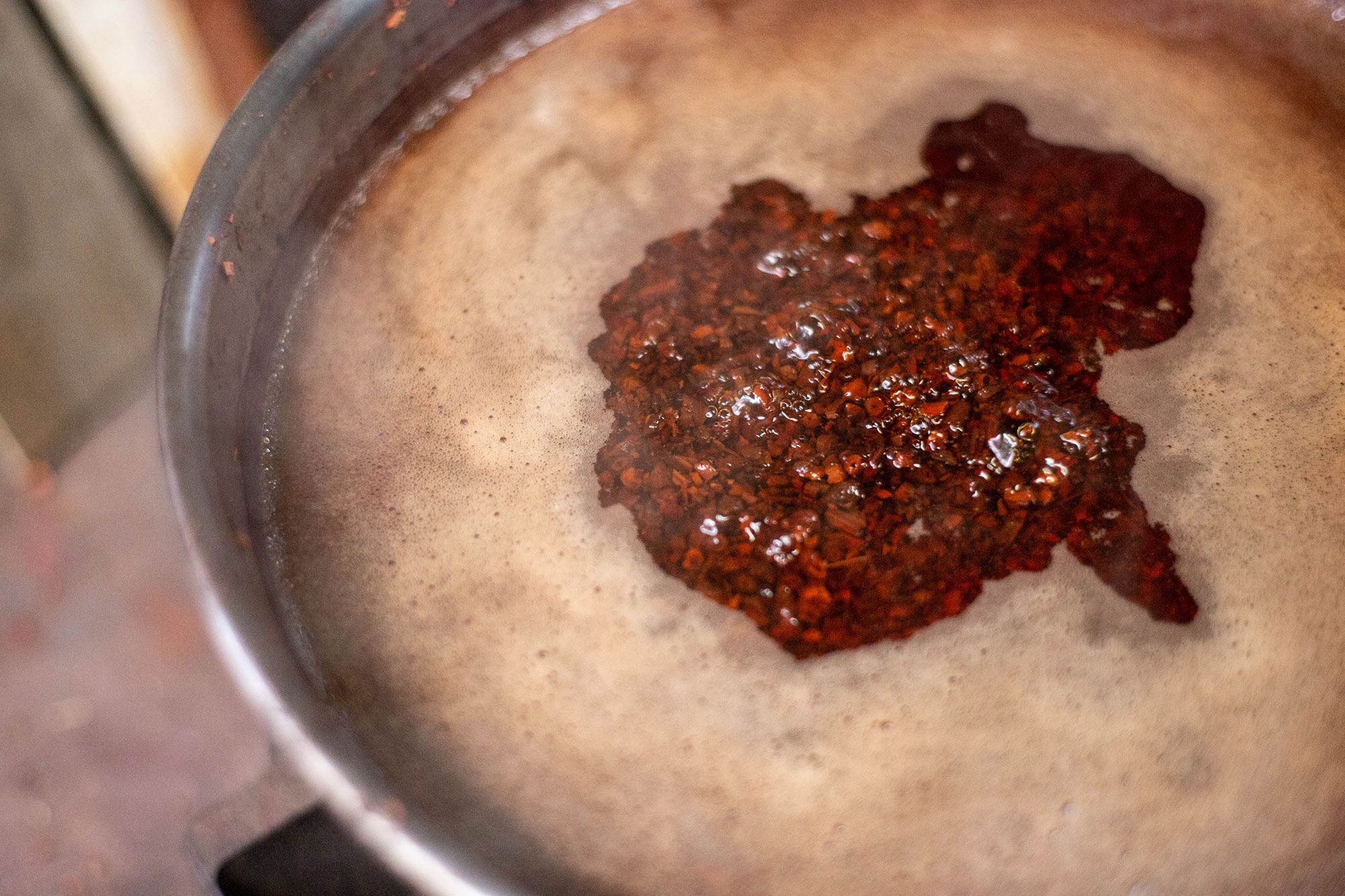

Akane(Madder) is boiled to be made into dye
The evidence can be found in Nara’s Shosoin Temple, where records of dyeing ingredients remain. “We wish that we could visit Shosoin temple and receive some Sohou to use for dyeing” saids Yoshioka. A tag listed as Sohou still remains in Shosoin temple and craftwork using the Sohou trees are preserved as well. ”There is no country with a collection of arts objects made from dyeing materials” explains Yoshioka. Every year, Yoshioka visits the exhibition of Shosoin temple to observe the works of traditional dyeing.
Inside the workshop, the craftspeople were dyeing kimono textiles, cotton fabrics, handkerchieves and Washi(Japanese Paper). Next to the craftspeople were boiling vats with plants inside. The craftspeople explained that that plants are Akane(Madder) which will be used to dye the textile into red.
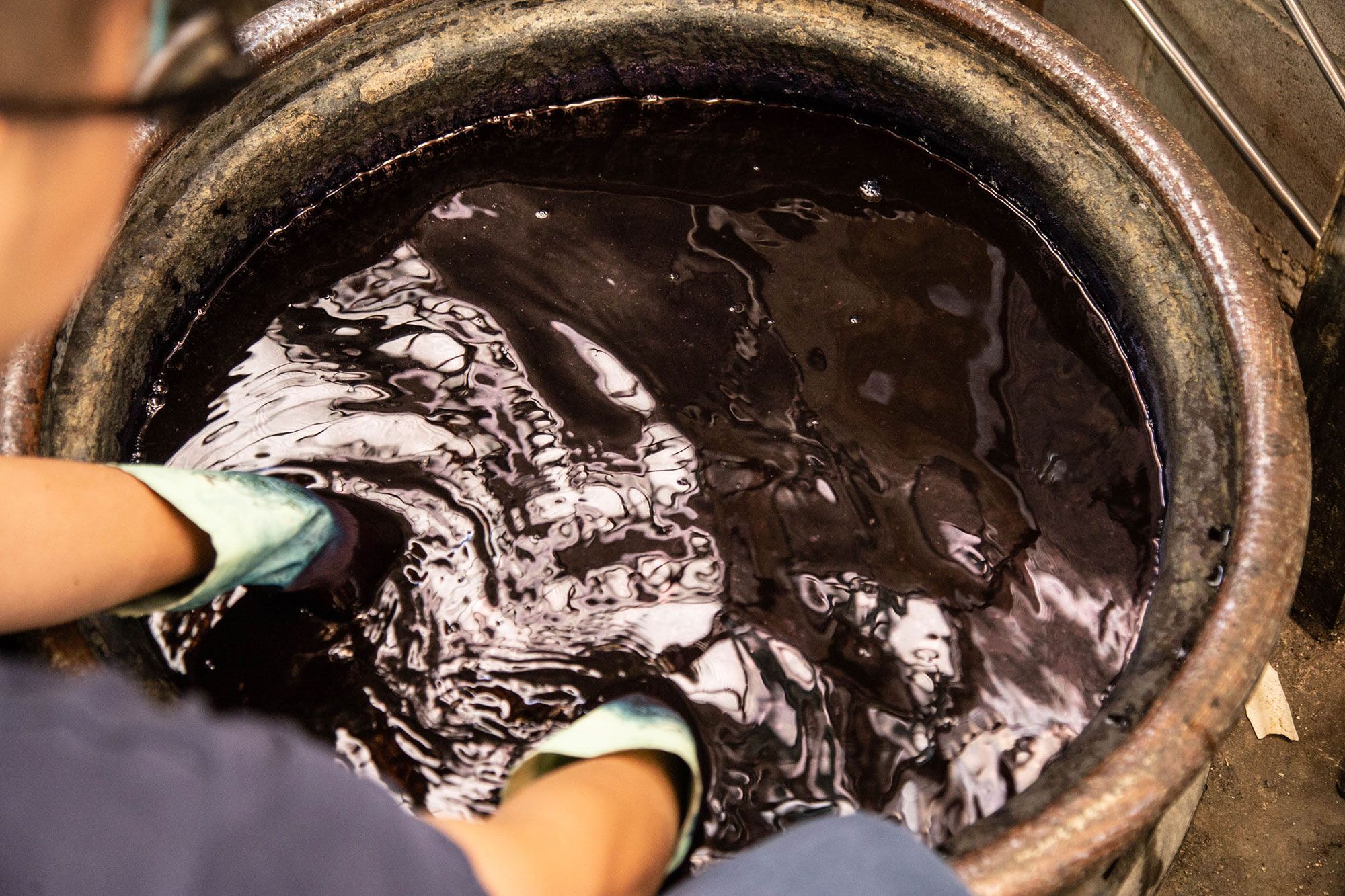

Aigame(Indigo Vat). The indigo becomes active after reaching 20 degrees celsius.
“When we dye using plants, there are colours which we never imagined from the looks of the plants. Techniques are required to express colours from the hidden and to have refinement at the same time.
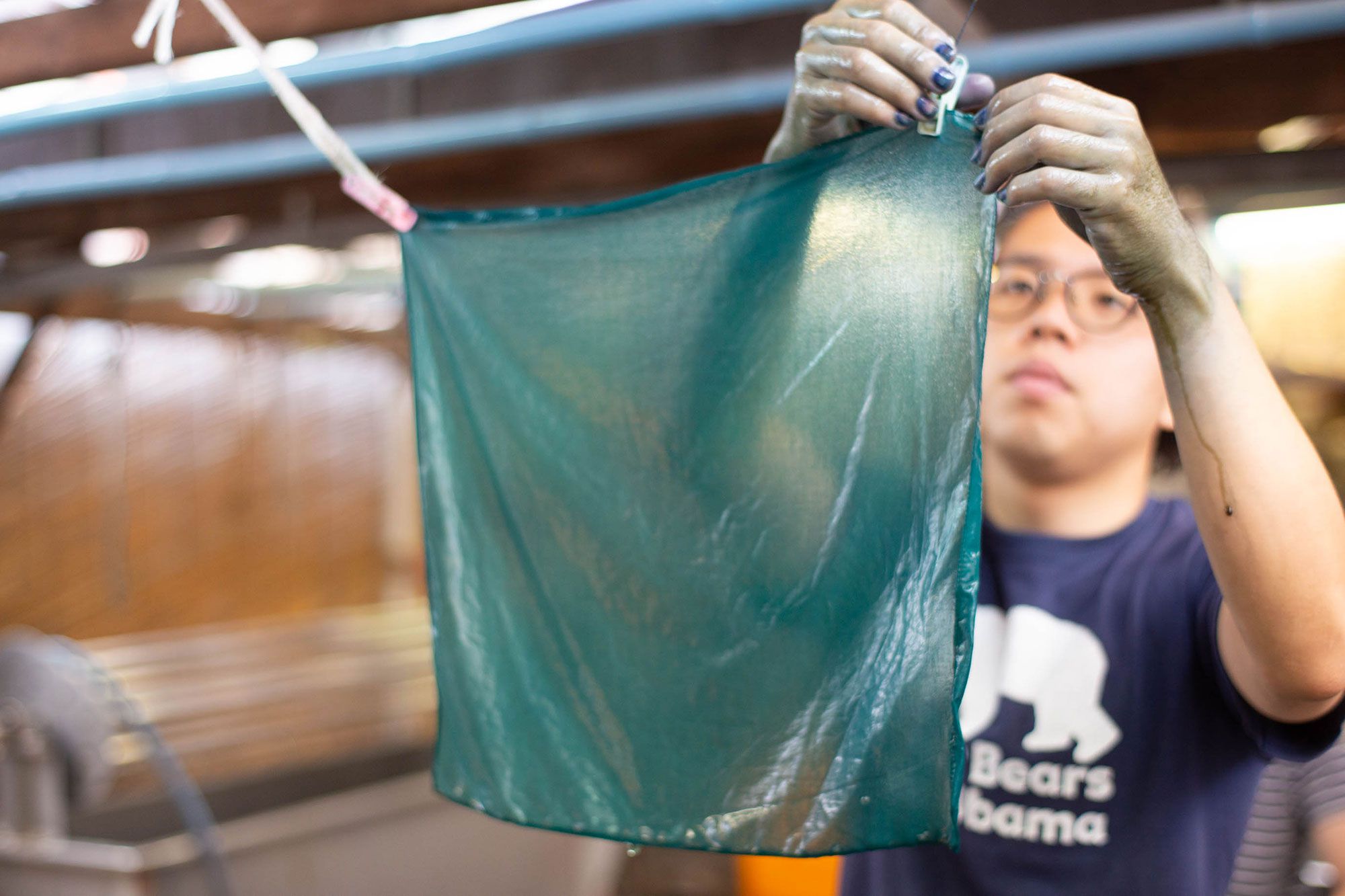

Handkerchief dyed with indigo. The hands of the craftsman are dyed as well.
Next to the Aigame, the craftsman was dyeing a handkerchief while counting in seconds. The preserved Sukumo (fermented indigo leaves) were placed into the vat with natural lye and bran to ferment. This process is called ”Ai wo Tateru”, meaning Indigo Making or Indigo Fermenting. The dyeing process starts once the temperature of the vat reaches above 20 degrees celsius.
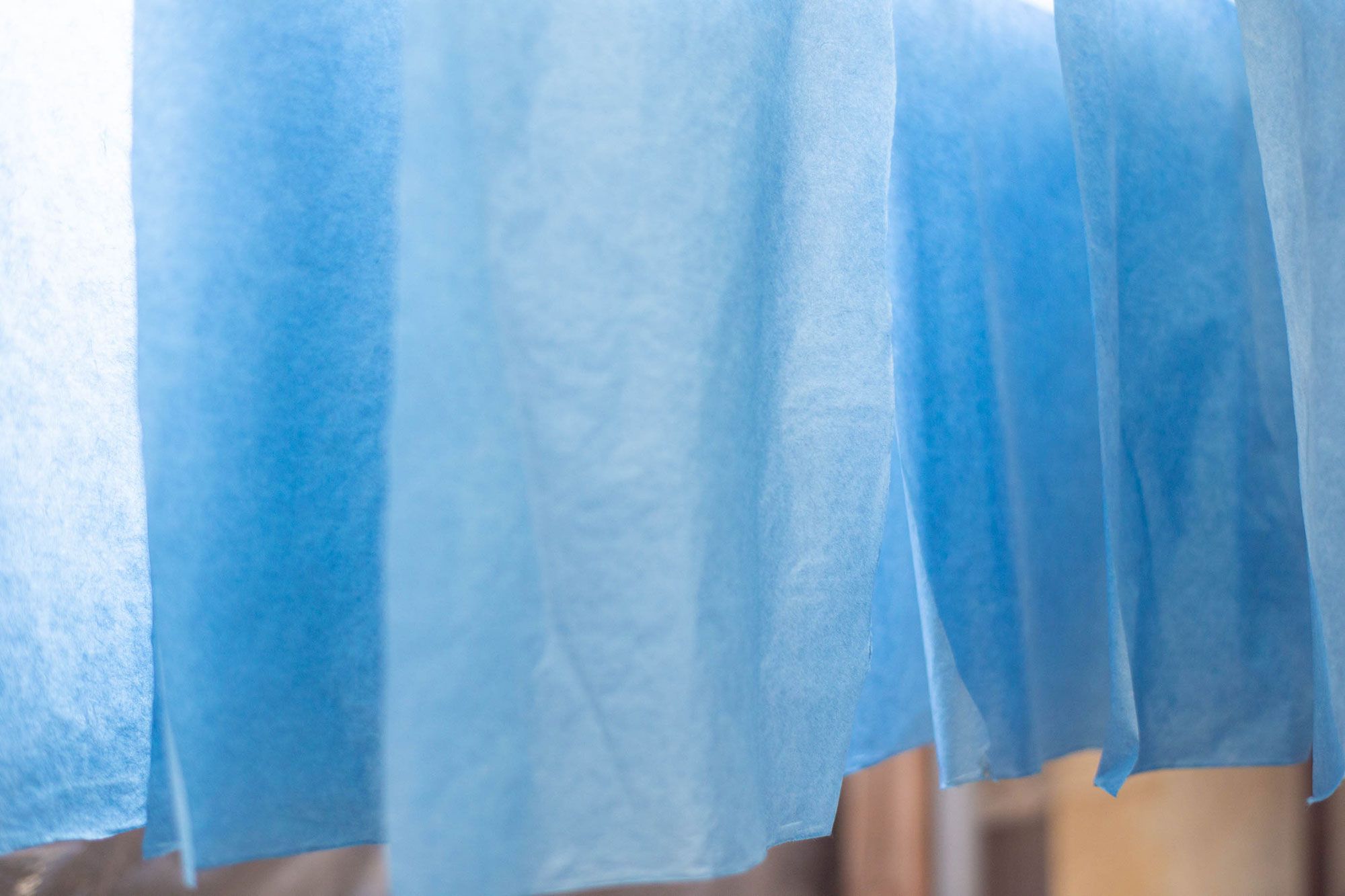

The colour of indigo changes based on the period of time dyed. During the early Meiji Era (1868-1912), visiting foreigners praised the beauty of indigo colours used in Kimono and Noren(Curtain) as “Japan Blue”.
A short time period of dyeing leads to a light indigo colour called Kamenozoki, which means “A look into the vat”. The name originates either from having a colour which appears as quickly as a glance into a vat or from having a light blue colour similar to the blue sky that can be seen in the reflection of the vat. In either case, the name shows the Japanese’s attachment to the colour and the connection with nature.
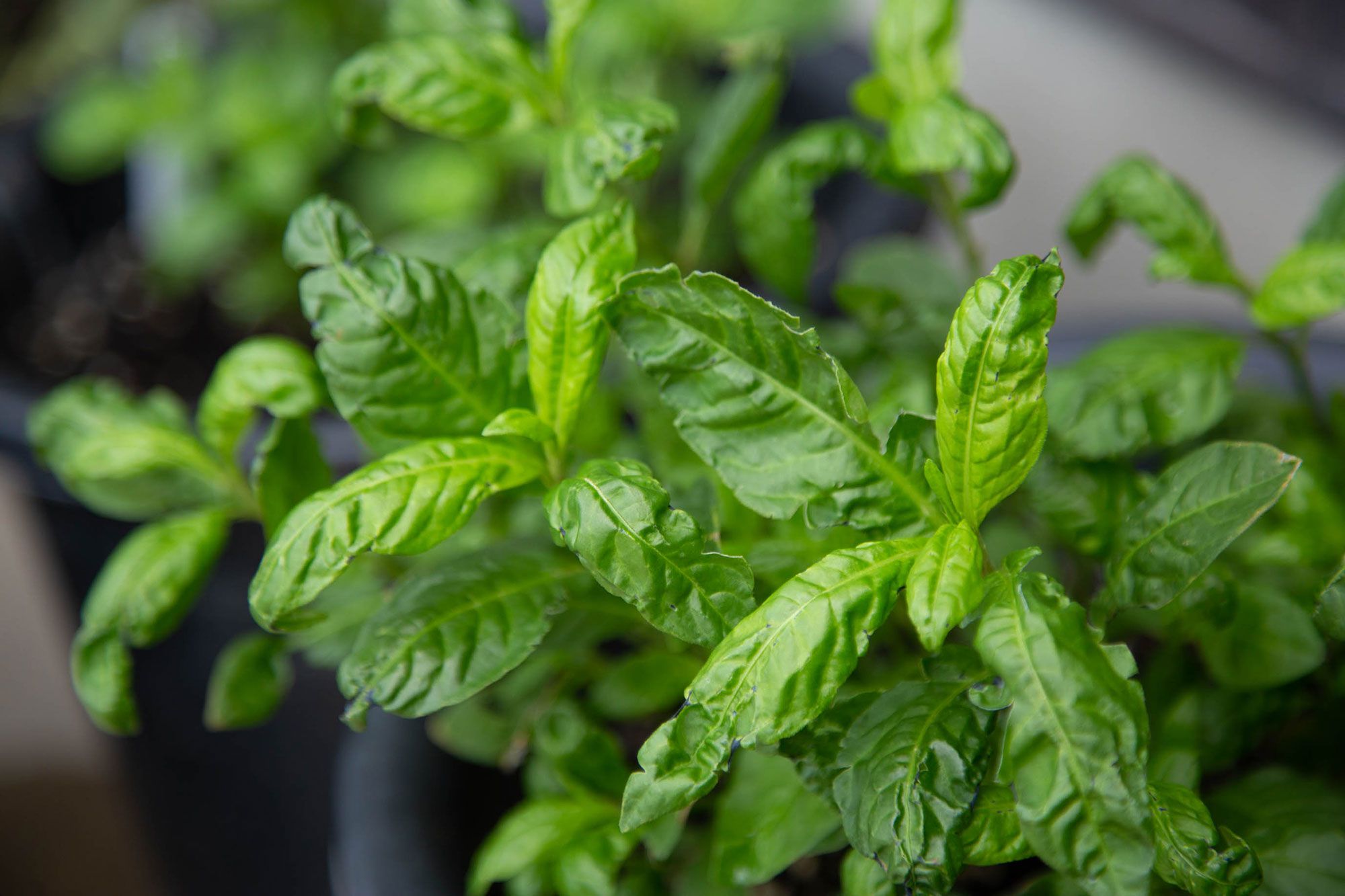

Tadeai(Dyer’s Knotweed) planted at the workshop garden. The indigo pigment can be seen from the cut.
Yoshioka was born on 1946 in Kyoto. He worked as a publisher after graduating from Waseda University. In 1988, Yoshioka took over the family business to become the fifth generation head of Somenotsukasa Yoshioka. Yukio Yoshioka Exhibition “In Search of Forgotten Colours” is currently being held at the V&A Museum (United Kingdom) until January, 2020.
https://www.sachio-yoshioka.com
Text by Akiko Ishizuka
